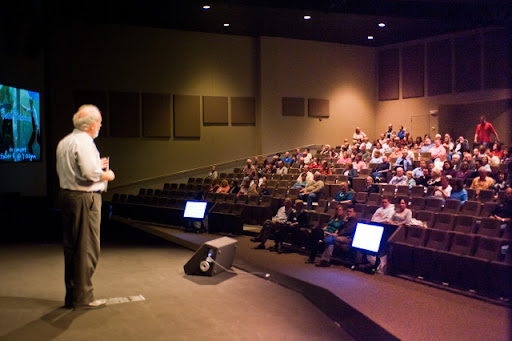And you can save to any USB device. Essentially it is a computor which physical faders.
You are using an out of date browser. It may not display this or other websites correctly.
You should upgrade or use an alternative browser.
You should upgrade or use an alternative browser.
Control/Dimming Lighting Controller Suggestions for Church
- Thread startertrpullen
- Start date
trpullen
Member
And you can save to any USB device. Essentially it is a computor which physical faders.
Those are both very cool options. I have watched the first 13 videos. So far, it looks like the only thing it does not allow for, that some software does, is naming a light channel "drums" or something English instead of just a number...but maybe that is in a future video.
I work for a school district, we use high school age kids to program and run all the aspects of our shows. That being said we have just moved from an express 72/144 to a 60/250 Element. So far the students have warmed up pretty quick to the Element.
We did buy the remote(a tad pricey) even though we have iPhones(yes have that app also) and I use my mac in MM mode so I can see what they see on the screen, if they run into a problem.
IMHO the Element is a very good console for the small to medium venue with multi-users and a short learning curve.
Sean...
We did buy the remote(a tad pricey) even though we have iPhones(yes have that app also) and I use my mac in MM mode so I can see what they see on the screen, if they run into a problem.
IMHO the Element is a very good console for the small to medium venue with multi-users and a short learning curve.
Sean...
Wow, those spandex panels are just crying out for some moving light gobos.
This reminds me of something you said earlier. The Jands Vista has created a niche for itself among Houses of Worship, specifically because of its time-line philosophy. Video editors and non-lighting professionals really like it. Those with lots of lighting experience on other consoles--not so much. Search some of the past threads on Vista. That being said, I don't think you'll be able to get even the smallest Vista console in the same price range as an Element.That basically sounds like us (minus the High Schoolers)....but maybe adults are slower to learn? ...
Last edited:
trpullen
Member
Wow, those spandex panels are just crying out for some moving light gobos.
This reminds me of something you said earlier. The Jands Vista has created a niche for itself among Houses of Worship, specifically because of its time-line philosophy. Video editors and non-light professionals really like it. Those with lots of lighting experience on other consoles--not so much. Search some of the past threads on Vista. That being said, I don't think you'll be able to get even the smallest Vista console in the same price range as an Element.
Right. I can do a Jands Software and a control surface of some kind for somewhere in that range. I read somewhere that a guy was having issues with it crashing on him but...that was only one instance of negative talk regarding Jands. We initially budgeted in the $10K range thinking that the ION was really our only choice BUT, if we don't HAVE to spend all that, it leaves us some room for better lighting choices.
Our primary volunteer LD/Drama person (I do more audio and band) is historically 100% ETC. The community theater and the high school in our town are both Express boards. I am basically doing a bunch of legwork mostly because I am the Google geek in the crowd. In any case, she is not afraid of moving to a different brand if it would suit our volunteer that run on Sunday AM better but, if we can build on what she already knows and make things easier, even better.
Is it my imagination or does the Element seem easier to use (or at least more intuitive) than the ION? The videos confused me on the ION a few months ago when we were looking at that. The videos for the Element seem to make more sense to me.
Last edited:
I think it depends more on how much you have used either of them. It does take a little but to get used to, but the Ion is (IMHO) very logical...as long as you have a fader wing or two.
jglodeklights
Well-Known Member
Each console in the EOS Family builds upon the last. The ION adds features such as discrete timing, the ability to assign timing within cues to individual channels and parameters without having part out the cue, and multiple cue lists that are linkable. The Gio and EOS have more outputs and more monitors, along with integrated motorized faders and a virtual media server. The basic language of all four is the same. The additional physical handles on the Gio and EOS create some change in programming habits versus the Element and ION, but all four are interchangeable for the basics.
Similar threads
- Replies
- 14
- Views
- 1K
- Replies
- 7
- Views
- 971
- Replies
- 7
- Views
- 641
- Replies
- 2
- Views
- 1K
- Replies
- 6
- Views
- 2K
Users who are viewing this thread
Total: 1 (members: 0, guests: 1)




